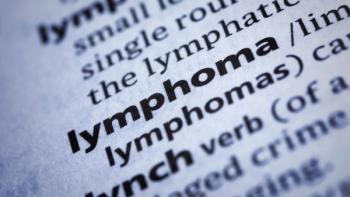
FDA Approves Pemazyre for Myeloid or Lymphoid Neoplasms With FGFR1-Rearrangements
The Food and Drug administration has approved Pemazyre for patients with relapsed or refractory myeloid/lymphoid neoplasms (MLNs) with an FGFR1 rearrangement.
The Food and Drug Administration (FDA) has approved Pemazyre (pemigatinib) for the treatment of adults with relapsed or refractory myeloid/lymphoid neoplasms (MLNs) with FGFR1 rearrangement, marking the first targeted treatment for this patient population, according to Incyte, the pharmaceutical company manufacturing Pemazyre.
Patients with FGFR1-rearrangement can have bone marrow involvement with a chronic myeloid malignancy, such as a myeloproliferative neoplasm (MPN) or myelodysplastic syndrome (MDS), or a blast-phase malignancy, such as B- or T-cell acute lymphobastic leukemia or lymphoma, acute myeloid leukemia or mixed phenotype acute leukemia.
The approval was based off findings from the phase 2 FIGHT-203 trial, which evaluated the safety and efficacy of Pemazyre in 28 patients with a relapsed or refractory MLN with an FGFR1 rearrangement. To be eligible, patients could have experienced relapsed after stem cell transplantation, after disease-modifying therapy or were not a candidate for other disease-modifying therapies.
“In patients with relapsed or refractory MLNs with FGFR1 rearrangement treated with Pemazyre in FIGHT-203, the high rate of complete response and complete cytogenetic response in patients with chronic phase disease and the high rate of complete cytogenetic response in patients with blast phase disease is clinically meaningful, especially in light of the lack of these specific responses with existing first-line treatments,” said Dr. Srdan Verstovsek, professor in the department of Leukemia, Division of Cancer Medicine, The University of Texas MD Anderson Cancer Center in Houston, and principal investigator for the FIGHT-203 study, in a press release.
Findings showed that in patients in the chronic phase, with or without extramedullary disease (when cancer cells move outside of the bone marrow), 78% experienced a complete response, meaning that their disease was no longer detectable after treatment. The average time to complete response was 104 days, and at the time the data was presented, the average duration of complete response was not reached.
Of the four patients with blast-phase disease, with or without extramedullary disease, two achieved a complete response, and of the three patients with extramedullary disease, one achieved a complete response.
Within the entire study population (28 patients), the rate of complete cytogenetic response (meaning that less than 1% of cells in the bone marrow have the Philadelphia chromosome, which is found in various blood cancers) was 79%.
The most common side effects observed in 20% or more of patients were abnormally high serum phosphate levels (74%), nail toxicity (62%), hair loss (59%), mouth sores (53%), diarrhea (50%), dry eye (50%), fatigue (44%), rash (35%), abdominal pain (35%), anemia (35%), constipation (32%), dry mouth (32%), nosebleeds (29%), retinal pigment epithelial detachment (26%), extremity pain (26%), decreased appetite (24%), dry skin (24%), indigestion (24%), back pain (24%), nausea (21%), blurred vision (21%), perphireal edema (21%) and dizziness (21%).
“The approval of Pemazyre represents an important treatment advancement for people living with MLNs with FGFR1 rearrangement who currently have limited treatment options,” said Hervé Hoppenot, chief executive officer of Incyte, in a company-issued press release.
For more news on cancer updates, research and education, don’t forget to




